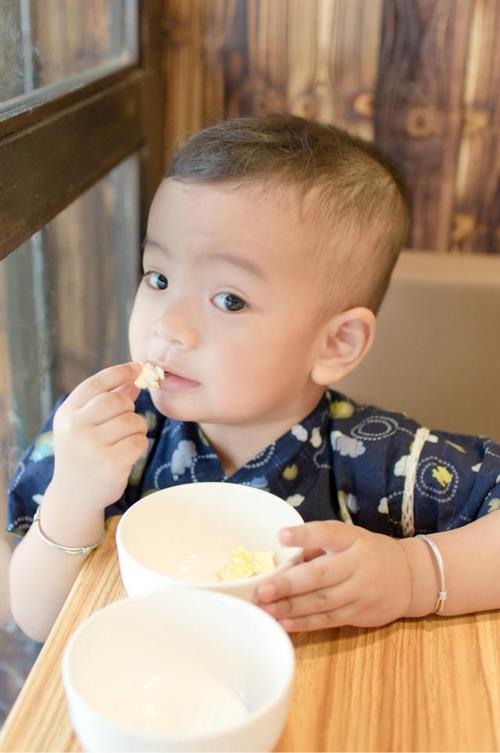Pneumonia is an inflammation of the lung caused by different pathogens or other factors (inhalation or allergic reactions, etc.). Its clinical manifestations include fever, cough, shortness of breath, difficulty breathing, and fine-rhythmic rales in the lungs.

First, light bronchial pneumonia
1. Fever: Most are high.
2, cough: began as a frequent irritating dry cough, followed by choking sound throat, cough can be accompanied by vomiting, breast milk.
3, shallow breathing faster, nasal fan, some children mouth, nails, mild cyanosis.
In addition to respiratory symptoms, children may be associated with systemic symptoms such as listlessness, irritability, loss of appetite, cramps, and diarrhea.
Second, severe pneumonia: in addition to the performance of mild pneumonia, the continued high fever systemic poisoning symptoms are severe, and accompanied by other organ damage.
1. Symptoms of the respiratory system: superficial and rapid breathing, up to 80 times per minute, alar fan, three concave signs, breathlessness, obvious facial purpura at the end of the face and extremities, and pale or blueish ash. Two
The lungs can smell and dense fine wet rales.
2, circulatory system symptoms: infant pneumonia is often accompanied by heart failure.
3, nervous system symptoms (1) irritability, drowsiness, staring, strabismus, eyeball spasm. (2) Drowsiness, coma and convulsions. (3) conjunctival edema. (4) The pupil changes, and the response to light is slow or disappears. (5) The respiratory rhythm is not perfect. (6) Before the fontanelle expansion, there is meningeal irritation, cerebrospinal fluid in addition to increased pressure, the other are normally referred to as toxic encephalopathy, severe intracranial pressure is higher, there may be cerebral palsy.
4. Digestive System Symptoms: Loss of appetite, vomiting, diarrhea, abdominal distension in children, severe vomit for brown or blood in the stool, disappearance of bowel sounds, toxic intestinal paralysis, and toxic hepatitis.
5, there may be metabolic acidosis, respiratory acidosis, etc., mixed acidosis may also occur.

The dietary considerations for children with pneumonia include the following nine aspects.
1, avoid eating spicy food
Spicy foods are irritating, and it is easy to injure them. Therefore, children with pneumonia should not add spicy oil, pepper, and spicy condiments.
2, avoid eating raw food
If you eat watermelon, ice cream, frozen fruit juices, sorbets, popsicles, cold drinks, bananas, raw pears and other cold food, it is easy to inhibit the body's yang, and yang damage is not able to resist evil, the disease is difficult to heal, it should not eat, Especially for children with gastrointestinal symptoms should be taboo.
3, avoid eating high-protein diet
The main component of lean meat, fish and eggs is protein. One gram of protein absorbs 18 ml of water in the body, and the final product of protein metabolism is urea. Children eat more protein, the relative discharge of urea will also increase, and each discharge of 300 mg of urea to take away at least 20 ml of water. Therefore, children with hyperthermia should not eat a high-protein diet.
4, avoid eating greasy taste
Pneumonia in children with low digestive function, if the greasy smell, it will affect the digestive function, the necessary nutrition can not be timely replenishment, resulting in reduced resistance to disease. Therefore, should not eat cod liver oil, egg yolk, crab yellow, yellowtail fish, Salmon roe, as well as animal visceral and other foods. If you drink milk, remove the upper oil film. Nursing mothers should also eat less greasy food.
5, avoid eating polysaccharides
Sugar is a kind of calorie supplement. It has a simple function and is basically free of other nutrients. Children with pneumonia after eating more sugar, the body's white blood cell bactericidal effect will be inhibited, the more food intake, the more obvious inhibition will increase the condition.
6, avoid eating and drinking tea
Many children with pneumonia have fever and should avoid drinking tea. Because theophylline in the tea is excited by the central nervous system, it can keep the brain excited, and it can also increase the pulse and blood pressure. When the fever occurs, the body is in a stage of excitement between the right and the wrong, and the pulse is faster. After drinking tea, it will stimulate the heart muscle and increase consumption. This will not only reduce fever, but will also increase body temperature and induce other diseases.
In addition, tannic acid in tea has astringent effect, and Chinese medicine believes that it is not conducive to the spread of evil spirits on muscle surface, and it is not suitable for children with fever.
7, avoid eating acidic drugs and food
Schisandra, ebony, vitamin C, cranberries, oranges, vinegar, etc. Pickle, can be converged, can be astringent, impede sweat out of the table.
8, avoid eating abuse antipyretics
Just fever, use too much antipyretic drugs, not only adverse to the body, but also may cover up the condition and delay treatment. Therefore, fever should be used with caution in children with antipyretics, and avoid excessive use of drugs to prevent sudden body temperature drop, sweating, collapse occurred.
9, avoid eating indiscriminately taking heat medicine
Gold and silver tea, green fruit, Banlangen granules and other heat-clearing drugs are beneficial to children with pneumonia. However, it can not be taken for a long time, especially for people with weak constitution, do not take antipyretic drugs easily. Otherwise, it will hurt the righteousness of the body and make the original symptoms worse.
Frozen Yellow Tail,Frozen Yellow Tail Fish,Fresh Frozen Yellow Tail,Frozen Yellow Tail Scad Fish
ZHEJIANG RETRONX FOODSTUFF INDUSTRY CO.,LTD , https://www.retronxfoods.com